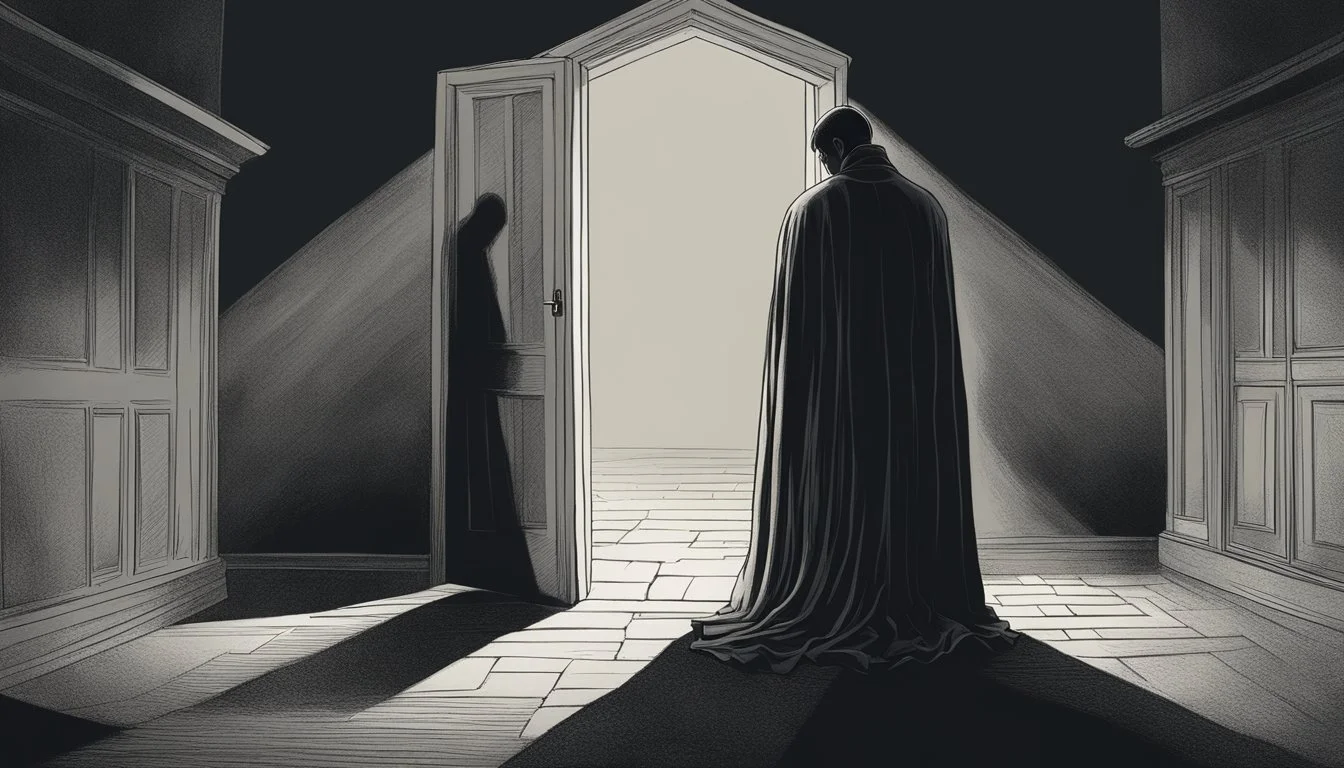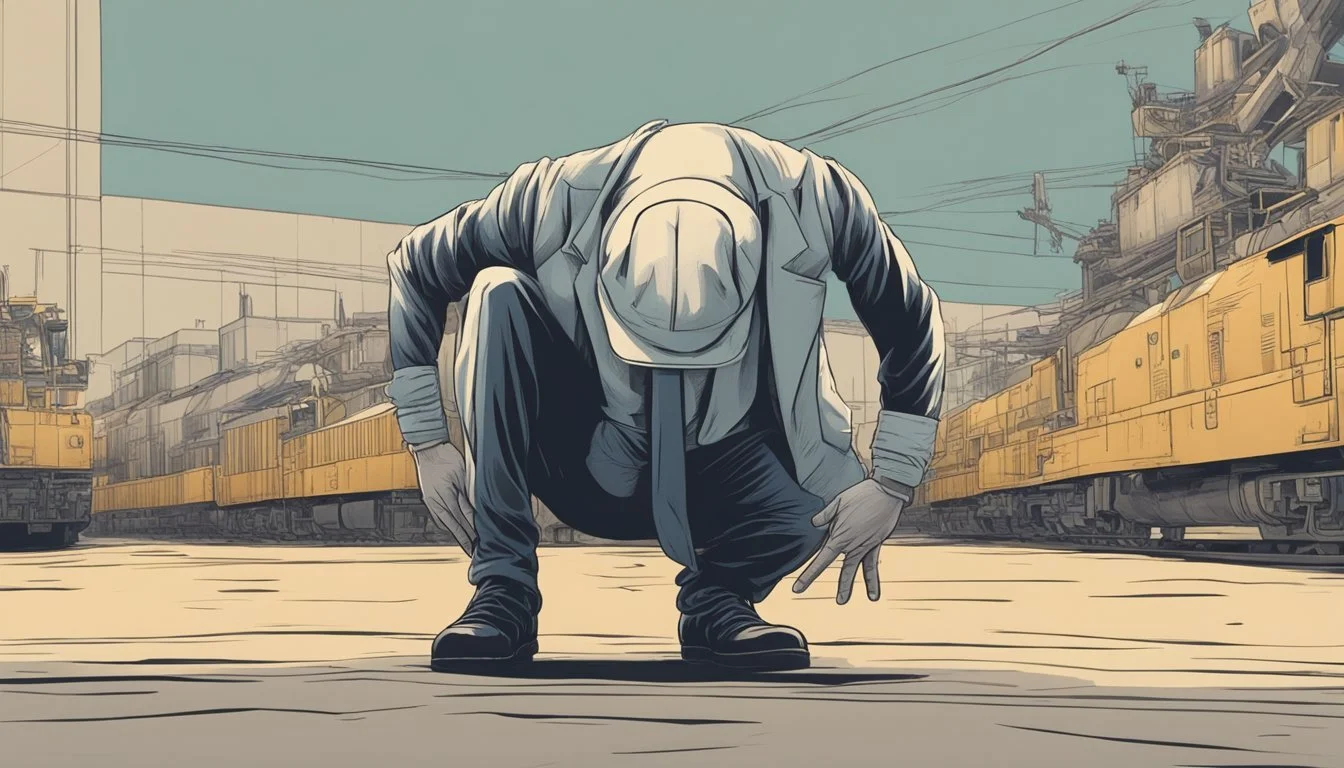12 Signs You May Be Experiencing Historical Trauma
Understanding the Impact on Mental Health
Understanding the impact of historical trauma is critical in today's world. This type of trauma can affect individuals and communities long after the original events have occurred, manifesting in various aspects of daily life.
How can one recognize the signs of historical trauma and its effects? By identifying these signs, individuals can begin the journey toward healing and reclaiming their well-being. This article aims to shed light on the subtle yet significant indicators that may suggest one is experiencing the lingering impacts of past generational traumas.
1) Recurring Nightmares
Recurring nightmares can be a sign of historical trauma. Individuals may experience vivid and distressing dreams that replay the events of their trauma. These nightmares often disrupt sleep and leave the person feeling unsettled.
Stress and anxiety from past traumatic events often trigger these nightmares. They may include themes directly related to the traumatic experience, such as danger, loss, or fear. The impact on sleep quality can be significant.
Children who have experienced early trauma might also face recurring nightmares later in life. According to research, traumatic events from childhood can manifest as nightmares in adulthood, exacerbating issues like anxiety and depression.
Those with PTSD frequently report distressing nightmares. These dreams can severely affect their quality of life. The nightmares differ from non-traumatic nightmares in their intensity and frequency.
To manage these nightmares, some recommend techniques such as controlled breathing. For example, breathing exercises where one inhales and exhales for four counts can help relax the mind before sleep.
Understanding the root cause of these nightmares is essential. Addressing unresolved trauma through therapy could be beneficial. For instance, trauma-focused therapy aims to process and alleviate the impact of these distressing dreams.
Recurring nightmares related to trauma are not just limited to those with PTSD. Ongoing stress and emotional challenges can contribute to their persistence. Identifying and addressing these underlying issues is crucial for improving sleep and mental health.
2) Hypervigilance in Safe Environments
Hypervigilance refers to an enhanced state of sensory sensitivity and exaggerated alertness. This condition is often linked to trauma and stress.
In safe environments, individuals experiencing hypervigilance may still feel a constant sense of threat. Their fight-or-flight response remains activated, making it difficult to relax.
This heightened state of alertness can lead to increased anxiety and persistent fear. Everyday activities like walking to their car or sitting at home may trigger intense alertness and unease.
Emotionally, people may struggle with irritability, mood swings, and feeling constantly "on edge" due to hypervigilance. This emotional turmoil can disrupt daily life and relationships.
Socially, hypervigilance can create barriers in relationships. Those affected might be overly cautious or mistrustful, finding it hard to fully engage or connect with others. The sense of being under constant threat makes it hard to feel safe or secure, even in familiar surroundings.
3) Disconnection from Family Traditions
Disconnection from family traditions is often a sign of historical or generational trauma. People affected may feel alienated from customs and rituals that once bonded their families. This detachment can lead to a sense of isolation and loss of identity.
Family traditions often serve as a bridge between generations, providing continuity and a sense of belonging. Trauma can disrupt this bond, making old practices feel irrelevant or even painful. As a result, individuals may avoid participating in family gatherings or cultural celebrations.
Sometimes, this disconnection surfaces as a struggle to pass traditions on to younger generations. Parents and elders may feel uncertain about the value of these customs, or lack the emotional energy to engage in them. This can create a cultural gap within the family.
Additionally, societal pressures and the complexity of modern life also play roles. The need to assimilate or adapt to new environments can overshadow the importance of maintaining family traditions. This external pressure amplifies the internal struggle already present due to historical trauma.
Limited storytelling about family history is another indicator. When members do not recount ancestral stories, it signals a break in the familial lineage and cultural heritage. This absence can deepen the feeling of disconnect from family traditions.
4) Persistent Feelings of Guilt or Shame
Persistent feelings of guilt or shame can be a significant indicator of historical trauma. Individuals may constantly ruminate on past events, feeling responsible for outcomes beyond their control. This can manifest as a consistent preoccupation with past mistakes, which can be emotionally exhausting.
Muscle tension and an upset stomach are common physical symptoms related to these feelings. These physical responses often accompany the intense emotional strain that guilt or shame can impose on a person.
Difficulty sleeping and loss of interest in daily activities are also frequent. The emotional burden can lead to a pervasive sense of fatigue, making it challenging to stay engaged with normal routines.
Additionally, constant guilt can be an underlying symptom of conditions like depression, post-traumatic stress, and obsessive-compulsive disorder. These mental health concerns need to be addressed for overall well-being. For further details, you can read more about the effects of constant guilt on mental health.
People with shame often seem introspective and lost in their thoughts. This introspection is a coping mechanism to avoid future shame and embarrassment. It can also lead to social withdrawal, affecting personal relationships significantly.
5) Frequent Flashbacks of Historical Events
Flashbacks can be a significant indicator of historical trauma. Such flashbacks may involve vivid memories or images of events that happened to ancestors. These experiences can feel incredibly real, almost as if the individual is reliving the past trauma.
People may experience these flashbacks visually, seeing scenes from historical events. Others might feel physical sensations or emotions tied to those events. This somatic experience can be deeply unsettling and confusing.
The flashbacks are not always direct memories of past generations. Instead, they can be triggered by situations that resonate with the historical trauma. A news story or a conversation can suddenly bring on these intense experiences.
In some cases, these flashbacks may impact daily functioning. It can be challenging to focus, perform tasks, or engage in social interactions when such flashbacks occur. Recognizing these flashbacks is a crucial step towards healing.
By acknowledging and addressing these flashbacks, individuals can begin to work through their historical trauma. Therapy and mindfulness techniques can help. For more information, you can explore resources such as Understanding and Working With Flashbacks, Part One.
6) Avoidance of Cultural Symbols
Avoidance of cultural symbols is a common sign of historical trauma. Individuals impacted by such trauma often distance themselves from objects or practices tied to their cultural heritage. This can include elements like traditional clothing, religious icons, or specific rituals.
Avoidance behaviors are usually rooted in past negative experiences linked to these symbols. For example, trauma from cultural suppression or discrimination may make people hesitant to engage with their cultural identity.
In some cases, individuals might feel intense emotions such as shame or fear when confronted with these symbols. It can stem from internalized negative beliefs about their culture.
This avoidance can hinder the process of healing and cultural preservation. By distancing themselves from their cultural symbols, individuals may miss out on the sense of identity and community these elements provide.
Addressing this avoidance behavior often requires therapeutic intervention. Mental health professionals can help individuals explore the reasons behind their behaviors. They can also guide them in slowly reintegrating positive cultural practices into their lives.
It is important to create supportive environments that encourage individuals to reconnect with their cultural roots. Community programs and cultural education initiatives can play a crucial role in this process.
More information can be found in resources discussing the effects of the traumas inflicted on groups.
7) Emotional Numbness
Emotional numbness is a significant sign of historical trauma. This involves a detachment from emotions, where individuals may find it hard to feel joy, sadness, or even love. It’s as if their emotional switch has been turned off.
People experiencing historical trauma might feel distant from others. They can struggle to engage in relationships and social activities, feeling like they are going through the motions without truly being present.
This numbness might manifest physically, with individuals feeling flat and indifferent. They may not react strongly to positive or negative experiences, indicating a deeper emotional issue.
Recognizing emotional numbness is crucial for addressing historical trauma. It shows an underlying pain that needs attention for healing to begin.
8) Difficulty Forming Healthy Relationships
Historical trauma can significantly impact one’s ability to form healthy relationships. Individuals affected by such trauma often struggle with trust issues. They may find it difficult to feel safe or secure around others, leading to significant barriers in relationship-building.
People with a history of trauma might exhibit anxiety or fear in social interactions. This heightened sensitivity can make it challenging to maintain close connections. They might also experience emotional responses that are unpredictable or intense when reminded of past traumatic events.
Moreover, those who have experienced relational trauma, such as neglect or abandonment, might struggle with feelings of low self-worth. They may doubt their value in relationships, leading to a pattern of codependency or an inability to set healthy boundaries.
In some cases, individuals might avoid relationships altogether. This avoidance can stem from a desire to protect themselves from perceived threats. It can result in isolation and a lack of supportive social networks.
Children exposed to trauma may carry these relational difficulties into adulthood. Early traumatic interactions with caregivers can lead to long-term challenges in developing and maintaining strong personal relationships. These patterns often persist unless addressed through targeted therapeutic interventions.
For further reading on the impact of relational trauma, visit Relational Trauma: Effect on Relationships.
9) Overwhelming Sadness
Individuals experiencing historical trauma often feel an overwhelming sadness that pervades their daily lives. This sadness may not have a clear origin, making it difficult to understand or address.
For many, this sadness can become a persistent emotional state. It can affect their motivation, leading to withdrawal from social activities or responsibilities. This persistent feeling may contribute to other emotional struggles like depression.
Overwhelming sadness related to historical trauma can be exacerbated by triggers reminding individuals of past trauma. These triggers can bring back feelings of loss and grief associated with historical events, deepening the sadness.
Children and grandchildren of those who faced severe trauma may also experience this sadness. The pain experienced by ancestors can manifest through emotional distress in later generations, even if they did not directly experience the traumatic events themselves.
Addressing overwhelming sadness often requires recognizing its roots in historical trauma. Acknowledging and understanding this connection can be a crucial step in finding effective coping strategies. For some, therapy or support groups focusing on trauma may provide paths to healing.
Understanding and addressing this sadness is essential for mental well-being. It is a key component of historical trauma that requires compassionate and informed approaches.
10) Fear of Authority Figures
Fear of authority figures is a common sign of historical trauma. Individuals may feel intense anxiety or stress when interacting with police, teachers, or other figures of authority.
This fear often stems from past experiences where authority figures abused their power. Historical events, such as colonization or cultural suppression, contribute to this fear in marginalized communities.
Authority figures have historically played roles in enforcing discriminatory laws and practices. This creates a learned fear passed down through generations.
The trauma of out-of-control authority figures can lead to lasting psychological impacts. Symptoms may include avoidance, anxiety, and hypervigilance in situations involving authority figures.
Understanding the roots of this fear can help in addressing and healing from historical trauma. Counseling and community support may assist individuals in overcoming this deep-seated fear.
For more insights, you can read about the trauma of out-of-control authority figures.
11) Low Self-esteem Linked to Ancestry
Low self-esteem can often be traced back to historical trauma passed down through generations. Families with histories marked by oppression, displacement, or systemic discrimination may find descendants struggling with self-worth issues.
Such trauma can manifest in feelings of inadequacy and a constant need to prove oneself.
Individuals might experience chronic fatigue and muscle tension, symptoms associated with low self-esteem due to emotional stress.
The impact of negative social comparisons across generations can also contribute to low self-esteem. These individuals may compare themselves unfavorably to others, exacerbating feelings of inferiority.
Additionally, they may exhibit a heightened sensitivity to criticism, both from themselves and others, highlighting another sign of low self-esteem.
This emotional inheritance can affect behavior, making it challenging to accept compliments or ask for help. It reflects deeply ingrained patterns of thinking and feeling, rooted in collective family experiences.
By understanding the link between ancestry and self-esteem, individuals can begin to address these underlying issues and seek appropriate support.
12) Struggles with Identity and Belonging
Experiencing historical trauma can lead to significant struggles with identity and belonging. Individuals might question core aspects of who they are, such as their beliefs, values, and cultural roots. This internal conflict can create a persistent sense of confusion.
Feelings of not fitting in are common. People may grapple with where they belong, both within their family and broader community. This can result in social withdrawal or isolation, often exacerbating feelings of loneliness.
The fragmentation of cultural identity is another challenge. Historical trauma can disrupt the transmission of cultural practices and traditions, leading to a loss of cultural continuity. This disconnection can leave individuals feeling alienated from their heritage.
Identity crises may also manifest as shifting values or adapting to different environments. This constant adaptation can cause stress and anxiety, further impairing one's sense of self. It is important to recognize these struggles as part of the broader impact of historical trauma and seek appropriate support.
For more information about identity crises and their symptoms, visit Healthline or Psych Central.
Understanding Historical Trauma
Historical trauma refers to the cumulative emotional and psychological impact of massive group trauma experienced across generations. This concept is crucial to understanding current-day mental health issues in affected communities.
Definition and Origins
Historical trauma is defined as the collective trauma experienced by a specific group of people due to significant, severe events. These events include enslavement, genocides, and systemic oppression. For example, the enslavement of Black and African American people and the Holocaust are key instances where entire communities faced immense suffering.
The trauma is not just individual; it reverberates across the entire group. Both those who directly experienced the trauma and their descendants can exhibit symptoms such as anxiety, depression, and PTSD. Essentially, historical trauma encompasses events that have profound and lingering effects on collective identity and wellbeing.
Generational Impact
The impact of historical trauma extends beyond those who directly experienced it, affecting multiple generations. This is known as intergenerational trauma. Descendants of those who underwent traumatic events often face psychological and emotional challenges. They may show symptoms such as fixation on trauma, low self-esteem, and anger.
Studies indicate that even without direct exposure to the original trauma, later generations can suffer from its effects. This shared trauma often emerges in families and communities through storytelling, behavior patterns, and even cultural practices. These generational impacts underline the importance of addressing and healing from historical trauma to break the cycle of suffering.
Psychological Symptoms of Historical Trauma
Psychological symptoms of historical trauma often manifest as persistent anxiety, depression, and severe stress-related disorders. Individuals may experience a range of mental health issues which impact their daily lives and interpersonal relationships.
Anxiety and Depression
Anxiety and depression are common symptoms of historical trauma. Individuals may experience chronic feelings of sadness, hopelessness, or intense anxiety without an immediately apparent cause.
Historical trauma can trigger hypervigilance and a constant sense of unease. This may stem from multigenerational trauma, where stress responses are passed down through families. People affected might avoid situations that remind them of past traumas, or they could exhibit overwhelming worry about the future.
Depression, which includes persistent low mood, loss of interest in daily activities, and fatigue, can also be traced back to historical trauma. These symptoms can impair a person's ability to function in social and occupational settings. They might feel alienated or disconnected due to embedded traumatic experiences from their ancestors.
Post-Traumatic Stress Disorder (PTSD)
PTSD linked to historical trauma involves reliving distressing events through flashbacks, nightmares, and intrusive thoughts. These symptoms may be experienced even if the individual did not directly endure the traumatic events.
Historical trauma can create a strong sense of hyperarousal, where the affected person feels perpetually on edge. They may experience difficulty sleeping, irritability, or sudden outbursts of anger. PTSD can profoundly affect mental health, leading to avoidance behavior that prevents engagement in normal daily activities.
Efforts to understand historical trauma reveal how deeply embedded and insidious its effects can be, influencing the mental health of individuals long after the initial traumatic events occurred.
Coping with Historical Trauma
Addressing historical trauma requires a multifaceted approach, involving both professional therapy and community-based practices. This can help individuals and groups heal and move forward.
Therapeutic Approaches
Professional therapy can be instrumental in addressing the symptoms and root causes of historical trauma. Techniques like Cognitive Behavioral Therapy (CBT) focus on changing negative thought patterns and behaviors. Additionally, Eye Movement Desensitization and Reprocessing (EMDR) has been effective in treating trauma by enabling patients to process and integrate traumatic memories.
Therapists may also use Somatic Experiencing, which helps individuals release trauma stored in the body. Special attention is often given to building resilience through mindfulness practices and self-care strategies. Engaging with therapists familiar with cultural sensitivities can profoundly influence the healing process.
Community Healing Practices
Community-driven methods emphasize collective healing, acknowledging that historical trauma affects entire groups. Talking circles and community storytelling can provide safe spaces for sharing experiences and validating feelings. These practices foster a sense of belonging and mutual support.
Cultural rituals and ceremonies play a critical role as well. Reconnecting with ancestral traditions and cultural heritage can restore pride and identity, crucial elements for healing. Furthermore, community workshops and educational programs aim to raise awareness and provide tools for dealing with trauma, reinforcing the community's strength and resilience.
By combining these approaches, individuals and communities can work toward healing the wounds of historical trauma and building a healthier future.






